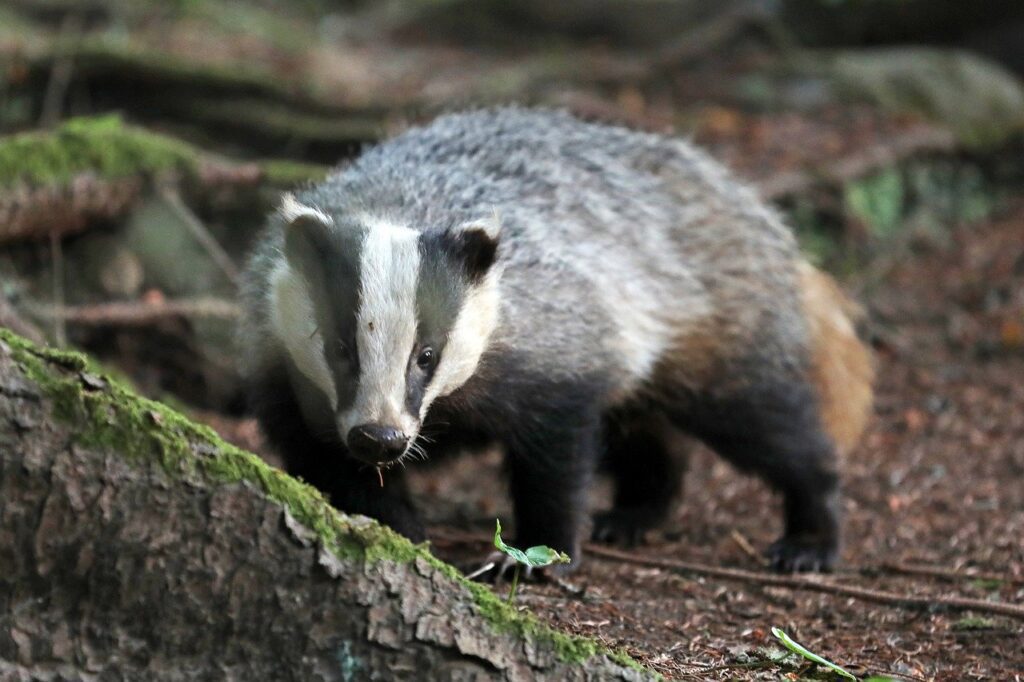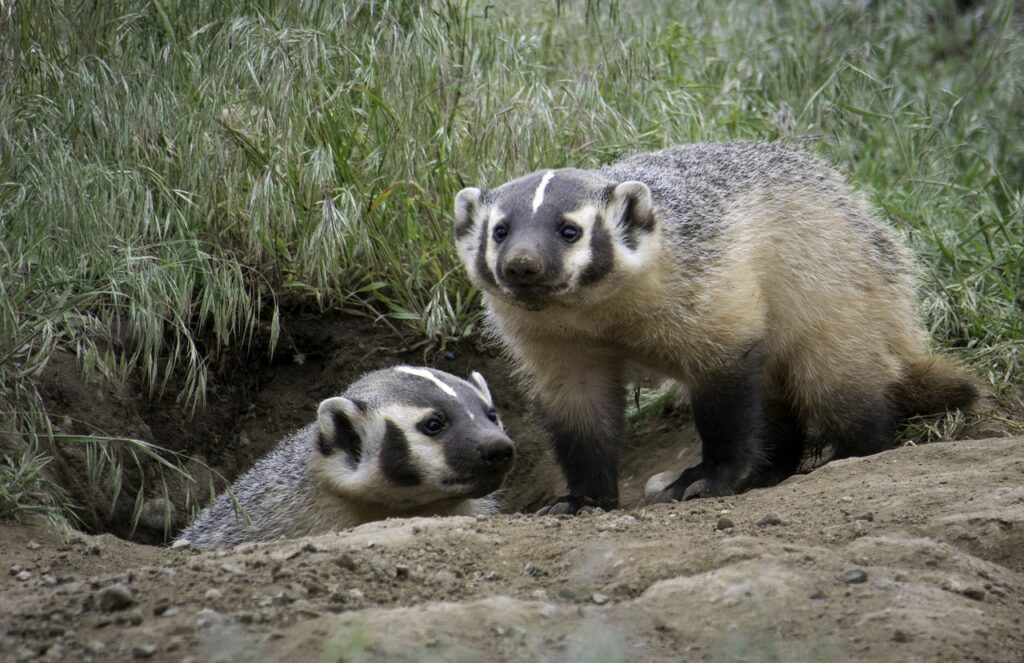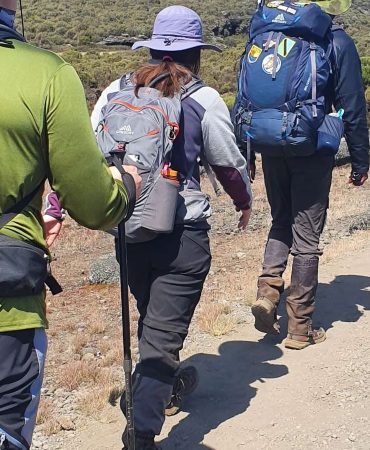Fearless Honey Badgers: Explore 5 bold tactics inspired by fearless honey badgers to conquer your fears and rise above challenges. Unlock your inner strength and courage today.



Fearless Honey Badgers
Introduction
Overview of Honey Badgers in Tanzania
Honey badgers, also known as ratels, are one of the most fascinating and fearless animals in Tanzania. Known for their tenacity and toughness, these small carnivores are part of the Mustelidae family, which includes weasels, otters, and ferrets. Tanzania, with its rich biodiversity and diverse ecosystems, is an ideal place to observe these incredible creatures in their natural habitat.
Importance of Understanding Wildlife Behavior for Safe Travel
Understanding the behavior of wildlife, including honey badgers, is crucial for anyone planning to travel to Tanzania. Not only does it enhance the safari experience by allowing travelers to observe animals more closely and safely, but it also helps in promoting conservation and respecting the natural environment.
Geographical Information
Location and Habitat of Honey Badgers in Tanzania
Honey badgers are found throughout Tanzania, from the dry savannas and grasslands to the dense forests and mountainous regions. They are highly adaptable and can thrive in various environments, which makes them a common sight in many of the country’s national parks and wildlife reserves.
Climate and Best Times to Observe Honey Badgers
Tanzania has a tropical climate with two main seasons: the dry season (June to October) and the wet season (November to May). The best time to observe honey badgers is during the dry season when the grass is shorter, and animals congregate around water sources, making wildlife viewing easier.
Biological Information
Physical Characteristics of Honey Badgers
Honey badgers are relatively small, with a body length of about 55-77 cm (22-30 inches) and a tail length of 12-30 cm (4.7-12 inches). They weigh between 6-16 kg (13-35 lbs). Their distinctive appearance includes a broad, flat body with a thick, muscular neck and powerful jaws. Their skin is loose, allowing them to twist and turn to escape predators or attack threats.
Dietary Habits and Hunting Techniques
Honey badgers are omnivorous and have a varied diet that includes small mammals, birds, reptiles, insects, and fruits. They are known for their impressive hunting skills and can dig into burrows to catch prey or use their strong sense of smell to locate beehives. Despite their name, honey badgers do not rely solely on honey; they have a diverse diet that helps them survive in different habitats.
Behavioral Insights
Daily Behavior and Activity Patterns
Honey badgers are primarily nocturnal, although they can also be active during the day, especially in cooler weather. They are solitary animals, with each individual maintaining a home range that they mark with scent glands. Their daily activities include hunting for food, digging burrows, and patrolling their territory.
Social Structure and Territoriality
Honey badgers are highly territorial and will defend their home range aggressively from intruders. Males have larger territories that may overlap with those of several females, but they typically avoid direct contact. Females raise their young alone, and the cubs stay with their mother for up to 18 months before becoming independent.
Interaction with Humans
Are Honey Badgers Human-Friendly?
Honey badgers are not naturally friendly towards humans and should be observed from a safe distance. While they are not typically aggressive unless provoked, their fearless nature and powerful defensive capabilities can make them dangerous if threatened. It is important to respect their space and avoid any actions that might be perceived as a threat.
Safety Tips for Encountering Honey Badgers in the Wild
When encountering honey badgers in the wild, follow these safety tips:
- Maintain a safe distance and use binoculars for close-up views.
- Avoid sudden movements or loud noises that might startle the animal.
- Do not attempt to feed or interact with honey badgers.
- Follow the guidance of experienced guides and rangers.
Fearless Nature of Honey Badgers
Why Are Honey Badgers So Fearless?
Honey badgers are known for their fearless behavior, which can be attributed to several factors:
- Physical Strength: They have strong, muscular bodies and sharp claws that make them formidable fighters.
- Tough Skin: Their skin is thick and loose, providing protection against bites and stings.
- Aggressive Defense: They will attack predators, including much larger animals, with ferocity if threatened.
- High Pain Tolerance: Honey badgers have a high tolerance for pain, allowing them to endure injuries and continue fighting.
Defense Mechanisms and Survival Strategies
Honey badgers employ various defense mechanisms and survival strategies, including:
- Digging: They can dig rapidly to escape predators or find food.
- Climbing: They can climb trees to avoid danger or access food.
- Scent Glands: They release a foul-smelling odor from their anal glands to deter predators.
- Aggressive Behavior: They will attack with their sharp claws and teeth, making them a formidable opponent.
Cultural Significance
The Role of Honey Badgers in Tanzanian Folklore and Culture
In Tanzanian folklore, honey badgers are often depicted as symbols of courage and resilience. Their fearless nature and tenacity have earned them a place in various myths and stories, highlighting their significance in local culture.
Conservation Efforts and Local Attitudes Towards Honey Badgers
Conservation efforts in Tanzania aim to protect honey badgers and their habitats. These efforts include habitat preservation, anti-poaching measures, and educational programs to raise awareness about the importance of honey badgers in the ecosystem. Local attitudes towards honey badgers are generally positive, with many communities recognizing their role in controlling pest populations and maintaining ecological balance.
Must-Visit Locations
Serengeti National Park
The Serengeti National Park is one of the best places to observe honey badgers in their natural habitat. The park is famous for its annual wildebeest migration and diverse wildlife, making it a top destination for safari enthusiasts.
Mount Kilimanjaro
Mount Kilimanjaro, Africa’s highest peak, offers a unique opportunity to explore diverse ecosystems and observe wildlife, including honey badgers, in the surrounding forests and plains.
Ngorongoro Crater
The Ngorongoro Crater is a UNESCO World Heritage Site known for its stunning landscapes and rich biodiversity. Honey badgers can be spotted here, along with a variety of other wildlife species.
Selous Game Reserve
The Selous Game Reserve is one of the largest protected areas in Africa and provides a pristine environment for observing honey badgers and other wildlife. The reserve offers a range of safari experiences, including walking safaris and boat safaris.
Lake Manyara
Lake Manyara National Park is famous for its diverse birdlife and tree-climbing lions. Honey badgers can also be seen here, particularly in the park’s woodland areas.
Activities and Experiences
Wildlife Safaris Focusing on Honey Badgers
Specialized wildlife safaris focusing on honey badgers offer an in-depth exploration of their behavior and habitats. These safaris are guided by experienced naturalists who provide valuable insights into the lives of these fascinating animals.
Nighttime Safaris and Unique Wildlife Encounters
Nighttime safaris provide a unique opportunity to observe honey badgers and other nocturnal animals in their natural habitats. Equipped with special lighting, these safaris offer an unforgettable experience of Tanzania’s wildlife.
Educational Tours and Conservation Programs
Educational tours and conservation programs offer hands-on learning experiences about honey badgers and their ecological importance. These programs often include visits to research centers and participation in conservation activities.
Travel Tips
Best Ways to Travel Within Tanzania
Traveling within Tanzania can be done by road, air, or rail. Domestic flights are a convenient option for covering long distances, while buses and trains provide more affordable alternatives. Hiring a car or using guided tours are also popular choices for exploring national parks and reserves.
Recommended Tour Operators and Guides
Selecting reputable tour operators and guides is essential for a safe and enjoyable safari experience. Some recommended operators include:
- Tanzania-Experience: Known for their personalized safari experiences and knowledgeable guides.
- Ranger Safaris: Offers a range of safari packages, including luxury and budget options.
- Nomad Tanzania: Specializes in bespoke safaris and has a strong focus on conservation.
Packing Essentials for Wildlife Safaris
When packing for a wildlife safari in Tanzania, consider the following essentials:
- Lightweight, breathable clothing in neutral colors
- Sturdy walking shoes or boots
- Sun protection (hat, sunglasses, sunscreen)
- Binoculars and a camera
- Insect repellent
- A reusable water bottle
Safety and Health Precautions
Vaccination Requirements for Travelers
Travelers to Tanzania should ensure they are up-to-date with routine vaccinations and receive travel-specific vaccines such as:
- Yellow fever (mandatory for entry)
- Hepatitis A and B
- Typhoid
- Rabies (for those engaging in outdoor activities or staying for extended periods)
Health and Safety Tips for Exploring Tanzania’s Wildlife
To stay safe and healthy while exploring Tanzania’s wildlife, follow these tips:
- Drink bottled or purified water
- Use insect repellent and sleep under mosquito nets to prevent malaria
- Follow the guidance of park rangers and guides
- Avoid touching or feeding wild animals
Importance of Travel Insurance
Travel insurance is essential for covering unexpected medical expenses, trip cancellations, and other emergencies. Ensure your policy includes coverage for adventure activities such as safaris and trekking.
Budget Planning
Cost Breakdown of a Typical Wildlife Safari
The cost of a wildlife safari in Tanzania varies depending on the level of luxury and duration. A typical cost breakdown includes:
- Budget safari: $150-$250 per day
- Mid-range safari: $250-$400 per day
- Luxury safari: $400+ per day
Money-Saving Tips for Budget Travelers
To save money on your safari, consider these tips:
- Travel during the shoulder seasons (April-May and November)
- Join group tours to share costs
- Book accommodations and tours in advance for better rates
- Use public transportation where possible
Recommended Budget for Different Types of Travelers
- Budget travelers: $50-$100 per day, including basic accommodation, meals, and activities.
- Mid-range travelers: $150-$250 per day, covering comfortable lodgings, guided tours, and meals.
- Luxury travelers: $300+ per day, for premium accommodations, exclusive tours, and gourmet dining.
Local Cuisine
Traditional Tanzanian Dishes to Try
Tanzanian cuisine offers a variety of delicious dishes, including:
- Nyama Choma: Grilled meat, usually goat or beef, served with side dishes like Ugali (maize porridge) or chips.
- Zanzibar Pilau: A spiced rice dish with meat or seafood.
- Chapati: A flatbread often served with stews or curries.
Popular Drinks and Beverages
Popular beverages in Tanzania include:
- Safari Lager and Kilimanjaro Beer: Local beers enjoyed by many.
- Dawa: A cocktail made with honey, lime, and vodka, popular in coastal areas.
- Fresh fruit juices: Made from tropical fruits like mango, pineapple, and passion fruit.
Dining Etiquette in Tanzania
When dining in Tanzania, follow these etiquette tips:
- Use your right hand for eating, as the left hand is considered unclean.
- Wait for the host to invite you to start eating.
- Show appreciation for the meal by thanking the host.
Conclusion
Summary of Key Points
Honey badgers are remarkable creatures known for their fearless nature and adaptability. Observing them in Tanzania’s diverse ecosystems provides a unique and enriching experience for wildlife enthusiasts. Proper planning, including understanding their behavior and respecting their space, ensures a safe and enjoyable safari.
Final Tips and Recommendations
When planning your trip to Tanzania, choose reputable tour operators, pack appropriately for the climate, and follow health and safety guidelines. Engaging in educational tours and conservation programs enhances the travel experience and supports local wildlife protection efforts.
Encouragement to Explore Tanzania’s Wildlife
Tanzania’s natural beauty and rich biodiversity make it a must-visit destination for any nature lover. Exploring the habitats of fearless honey badgers and other incredible wildlife offers unforgettable experiences. Start planning your adventure today and discover the wonders of Tanzania’s wildlife.




